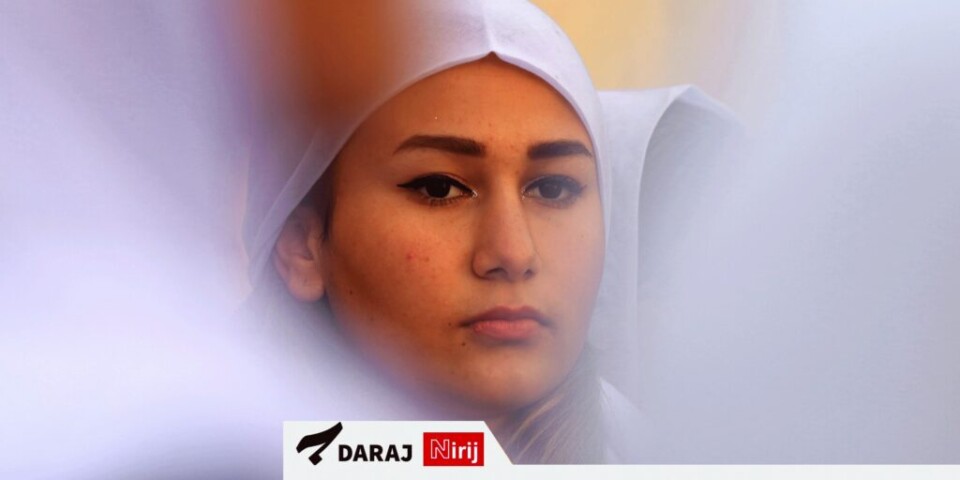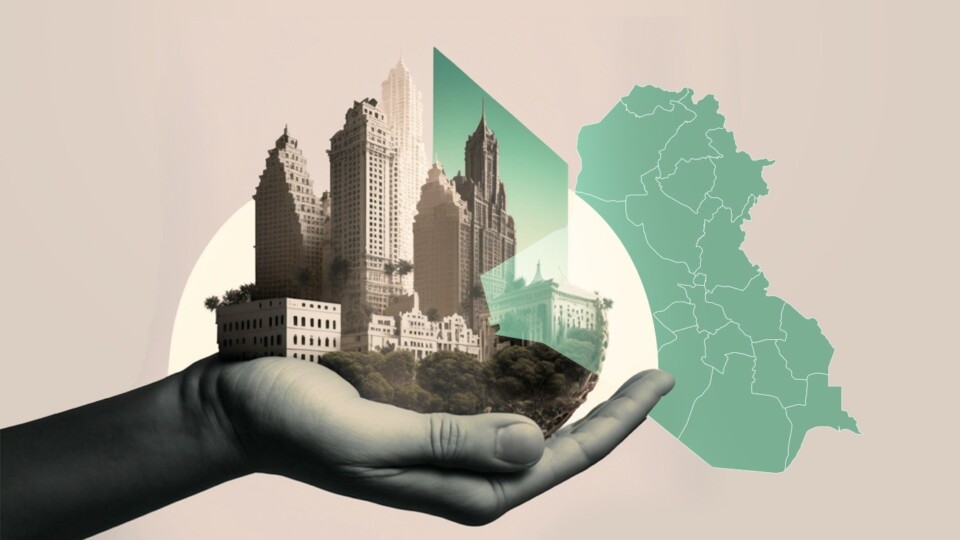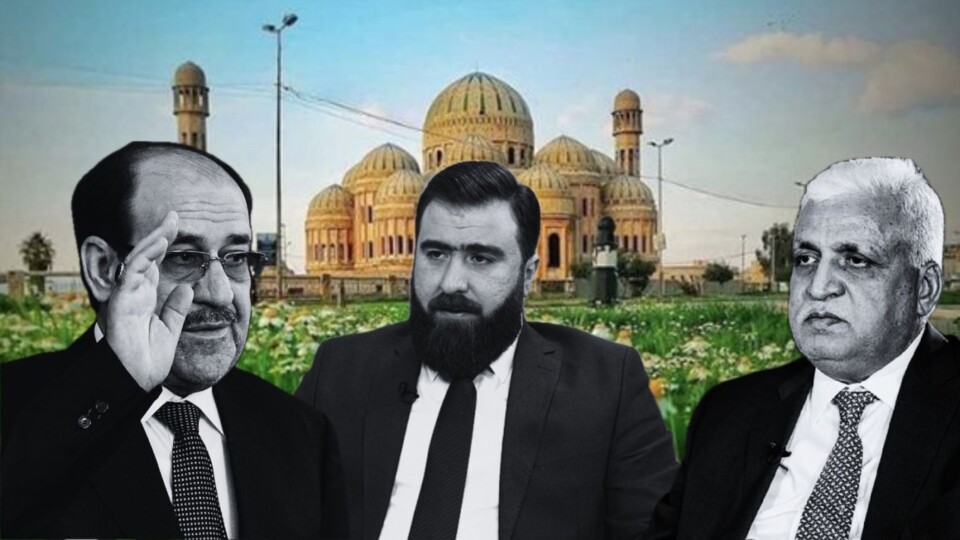

Yazidis Scattered Between Missing, Displaced, and Migrants Searching for a Homeland
Beside a small tent set up on the ruins of his destroyed mud house in the al-Qahtaniyah district, south of Sinjar (125 km northwest of Mosul), 72-year-old Khalaf sits for hours every day, gazing at the scattered remnants of houses and at the abandoned farmlands. Nothing suggests the presence of life there.
Nine years have passed since the Yazidis suffered mass killings at the hands of ISIS militants in Sinjar on August 3, 2014. However, scenes of destruction persist in the city centre and the scattered villages around it, where dozens of mass graves containing hundreds of victims are found.
In the summer of 2022, Khalaf returned to Sinjar with hundreds of other Yazidi families as part of voluntary initiatives encouraged by the Iraqi government to revive life in the city and its war-ravaged villages that were destroyed during ISIS’s control over them and later due to the battles to reclaim them.
However, this return remained limited, and was even followed by many cases of reverse displacement. This is due to the lack of services, delayed reconstruction compensations, and absence of job opportunities, in addition to security tensions in the region arising from conflicts among different factions with loyalties to different sects (Kurdish, Shia, and Sunni), as well as recurrent Turkish airstrikes, and disputes between the governments of Erbil and Baghdad.
These circumstances forced nearly a quarter of the Yazidis to migrate abroad in search of an alternative homeland. Still, around 300,000 Yazidis and Muslim Kurds continue to live away from their homeland, most of them residing in 16 camps.
“Nothing will return to how it was before the genocide,” says Khalaf. He continues with a melancholic tone, “What encourages them to return?” He gestures towards the tent sheltering his four-member family and adds, “We have not received support to rebuild our homes, and our children have not found job opportunities… Not everyone can survive in this dead land.”
He wipes the sweat off his forehead with the tip of his red headscarf (yashmagh), commonly worn by Yazidis, and wonders, “How do we start our lives anew? I spent my life as a farmer, and the area now lacks water, making agriculture impossible. Some relied on herding and animal husbandry for their livelihoods, but they lost everything they had during the ISIS attack.”
He falls silent for moments before pointing with his hand towards the empty houses and barren fields in front of him, and says, “as if they have never known life, as if no human has ever lived here.”
In the latest statistics from the Kidnapped Yazidi Rescue Office, documenting the numbers of the deceased and missing, 6,417 individuals fell into the hands of ISIS. Of those, 3,554 have been liberated, including 1,205 women, 333 men, and 1,992 children. Meanwhile, others remain among the missing.
The office, monitoring the conditions of the displaced from Sinjar, estimates the presence of 135,000 displaced individuals in camps in the Kurdistan Region and 189,000 in various areas outside the camps. It confirms the discovery of more than 60 mass graves and the destruction of 70 Yazidi religious shrines.
In a trembling voice, as he tried to keep his children away from the fire, he said, “This is our situation. If we go back to Sinjar, we will die of hunger, and if we stay here, perhaps one day we will burn under the tents.”
Death Camps
In Zakho, in the far north of Iraq, near the Turkish border, tens of thousands of Yazidis live. Some were born there, while others, originally displaced as children, have grown up within the confines of makeshift tents. Among them is “Emad,” who spent nearly half of his life in the “Jam Mishko” camp, an environment that largely shapes his world and memories.
Many of them are eager to return to Sinjar, especially with the deteriorating economic conditions in the region and the diminishing opportunities for migration to Europe due to the dangerous smuggling routes and high costs. “But nothing encourages us to return,” says Emad, while waiting on the side of a highway with dozens of other fellow construction workers.
There, the young man who dropped out of middle school stands for several hours every day, hoping that a car in need of construction workers, services, or furniture transport will stop for them. “Life is at a standstill in Sinjar; without job opportunities, we cannot return… All economic sectors are devastated”.
He gestures towards his companions whose faces are equally marked by the scorching sun, saying, “Here, under the blazing sun, we often wait for up to four hours to get a job. Every few days, we might have a chance to earn 15 or 20 thousand dinars—a modest sum, but even this opportunity is not available in Sinjar.”
Emad, whose family fled their home south of Sinjar nine years ago, confines all his dreams to one day leaving the small tent in which he grew up, to cross the Iraqi border in front of him. He points beyond the mountains, “there lies our only hope for salvation,” sighing, a reference to migration to Europe.
According to Yazidi organisations, more than 120,000 Yazidis migrated from Iraq in the early years following the ISIS attack and their mass displacement. However, these numbers escalate daily, whether through legal migration or smuggling. Nearly every boat attempting to cross the sea from Turkey to Greece or Italy carries Yazidi Iraqis.
He smiles while observing with bewildered eyes a group of his companions who seek shade under a tree a few metres away from the road: “They talk about us Yazidis a lot, but realistically, we are forgotten… Forgotten as we live, burn, and die under these tents.”
The majority of Yazidis work in arduous professions with daily wages, such as building services and working in agricultural fields. These jobs are mostly seasonal and barely provide the minimum requirements for their livelihood, making migration a preferable option.
The Wound of the Missing
Hassan Khuder (43 years old) recalls the memories of his last days in Sinjar: “We fled to the mountain in our neighbour’s car, and we lived there for five days without food, along with hundreds of besieged families… Many died of thirst amidst the sweltering heat.”
Khuder, who used to live in the village of Hardan north of Mount Sinjar, survived along with his wife the death squads sent by ISIS, but he lost three of his children who couldn’t escape with him. He says, “We lived through the worst days of our lives there; we were shocked and terrified for the fate of our children; we knew nothing about them… During the night, the wailing of women and the groaning of the sick lying on the rocky ground echoed in the darkness. Sometimes, we would hear the sound of gunfire. To this day, the nightmares of those days haunt us.”
The man, whose hair has turned grey, laments, “Following the capture of Tal Afar (located 75 km from Mosul) by ISIS in June 2014, the Peshmerga forces and the army reassured us and promised to protect us, but that never happened. ISIS mercilessly killed dozens at the crossroads of our village and on the routes leading to the mountain. My children are still missing; and we remain uncertain whether they lie in mass graves or are held captive with ISIS families. It’s a profound wound that refuses to heal, forcing us to relive the tragedy every day.”
Continuing in a sombre tone, he adds, “Sinjar remains unchanged, offering no incentive for us to return. While there were Peshmerga factions, police, and the army before, they all abandoned us and withdrew. Today, despite the presence of factions, the army, and police, the land lies in ruins.”
Here, under the scorching sun, we often wait for up to four hours to get a job. Every few days, we might have a chance to earn 15 or 20 thousand dinars—a modest sum, but even this opportunity is not available in Sinjar.”
The Ongoing Genocide
Faris Keti, the consultant to the Highest Yazidi Spiritual Council and the head of relations at Lalish Cultural and Social Center, expresses, “Even after nine years, there has been no substantial change in the Yazidi reality. This is why we assert that the genocide continues; its repercussions and foundations endure, impacting Yazidis everywhere.”
Keti adds, commenting on the description of many European countries of what the Yazidis were subjected to as genocide: “Even international recognition no longer holds real value because UN declarations have not progressed beyond the stage of mere announcement, and nothing has changed on the ground.”
“Yes, the Yazidis do need official international acknowledgment and a judicial recognition of the genocide crimes to avoid their recurrence in the future. However, this must be accompanied by sustained international pressure to compel Iraq to create conditions and provide guarantees for the Yazidis to live safely on their homeland,” he adds.
The writer Shihab Ahmed sheds light on a prevailing sentiment among the majority of Yazidis, characterising it as “frustration.” He further explains, “The only changes we’ve witnessed over the past years are merely the passage of time. The majority of people’s homes remain in ruins, the fate of hundreds of kidnapped women remains uncertain, and tens of thousands of children have grown up in temporary camps, experiencing nothing but that. Their only glimpse of hope is through the lens of migration along perilous smuggling routes.”
Khaled Taalou, a writer specialising in Yazidi affairs, reiterates the same perspective, describing the Yazidi situation as deteriorating. He emphasises, “There are no positive signs; instead, their circumstances have worsened, with life in tents transforming into makeshift cities. The absence of the transitional justice implementation, the lack of commitment to searching for the kidnapped, completing the recovery of remains from mass graves, and providing material and moral compensation to the victims all contribute to their worsening plight.”
Taalou warns of what he describes as a near-consensus among Yazidis,”advocating for the pursuit of an alternative homeland beyond the Iraqi state boundaries.”
The activist Saad Hussein argues that all Yazidis face challenging circumstances, caught in the dilemma of either returning to the ravaged Sinjar—embroiled in a power struggle among various local and regional forces—or embracing life in the camps. He emphasises, “However, the plight is even more arduous for those with missing daughters or sons. Their uncertainty about whether their loved ones are alive or deceased adds an extra layer of hardship.”
These individuals aim to thoroughly search the camps of ISIS families in al-Hawl, Syria, or uncover graves to identify the victims. However, this process is expected to take several more years of waiting. Hussein emphasises, “In the end, every Yazidi lives in a state of frustration and anxiety, observing numerous perpetrators who are now free while the victims remain displaced indefinitely.”
Divisions and Conflicts
The mass killings of Yazidis by ISIS, along with the failure of the Iraqi army, police, and Kurdish Peshmerga forces to defend them, profoundly shocked the Yazidi community. This shock led to significant divisions and the emergence of differing perspectives on how to protect themselves. Additionally, political forces and security formations arose due to the absence of a unified political reference and the weakness of their religious authority.
Initially operating independently, these formations eventually felt compelled to align with security and military groups associated with traditional Kurdish or Iraqi Arab forces and, at times, regional entities. The pressure of financial and armament demands played a significant role in prompting these alliances.
Yazidis were present in units backed by the Peshmerga, as well as in units supported by the Kurdistan Workers’ Party (PKK), and some were affiliated with factions within the Popular Mobilization Forces (PMF) associated with Iran. Moreover, others were incorporated into the Iraqi army and police. All these groups established their foothold in Sinjar, and they now fiercely defend their own interests.
What applies to the Yazidis in general also applies to the Muslims of Sinjar, especially the Shiites among them.
Therefore, according to the writer Shihab Ahmed, divisions and disagreements have intensified precisely at a time when the challenges necessitate a united front. He observes, “Regrettably, what transpired is that we kept drifting apart and distancing ourselves from each other day by day.
As an example, he points out the commemoration of the ninth anniversary of the genocide by various Yazidi factions, each holding distinct events in its respective areas of influence. “We witnessed events and speeches taking place in more than one place, with each group echoing its slogans and raising its flags,” he notes.
He points out the division even at the administrative level. The Sinjar district administration and service department officials are noticeably absent from the city. Instead, they have established alternative work locations for themselves in the Kurdistan region. Various areas are administered by factions loyal to the Kurdistan Workers’ Party (PKK), while others are dominated by the Shiite Popular Mobilization Forces (PMF). For years, there has been no agreement on selecting a district governor, and collaborative efforts are absent, particularly when it comes to providing services.

Samia, one of the kidnapping victims, endured approximately nine years away from her family in the horrors inflicted by ISIS.
The Stillborn Agreement
“The Sinjar Agreement” aimed to address the turmoil surrounding security, administrative, and political decisions in the disputed district between the governments of Erbil and Baghdad. It sought to reach an agreement on a path to control security, define the administrative framework, allocate specific roles for each party, and outline a reconstruction plan to serve as a starting point for resolving the outstanding issues.
Nevertheless, the exclusivity of the agreement, signed on 10-10-2020, between officials in Baghdad and counterparts in Erbil, without considering the opinions of the rest of the Yazidi forces and neglecting the complexities on the ground—including the significant presence of the Popular Mobilization Forces (PMF) and the demands and conditions it imposes, coupled with the non-involvement of the majority of influential forces on the ground—rendered it stillborn, despite international community support.
Saeed Hussein, a writer interested in the situation in Sinjar, says, “Officials in both governments (Erbil and Baghdad) drafted the terms of the agreement without considering the opinions of the Yazidis and the region’s residents regarding its details. It was a purely political agreement; hence, not a single clause of it was implemented.”
“The Yazidis today are not as they were yesterday, and we know what is happening behind the scenes. Rebuilding what ISIS destroyed cannot be achieved with political compliments,” he adds.
The agreement, supported by the international community and initially seen as a lifeboat, has turned into a new source of disagreement. Yazidi forces rejected it, and the Popular Mobilization Forces (PMF) did not welcome it, ultimately leading to internal rifts and divisions within the Yazidi community itself.
The majority of the Yazidi civil activists agree that the reality of security, political and administrative fragmentation undermines all efforts of reconstruction and voluntary return. This is exacerbated by divisions regarding priorities and demands, coupled with frustration about the feasibility of implementing commitments on the ground, including rebuilding what was destroyed, distributing compensations, providing essential services, launching projects that create job opportunities, and prosecuting perpetrators of crimes such as murder and rape against Yazidis.
Victims of Enslavement
Amidst a devastated infrastructure and stalled reconstruction projects, within a complex security environment, it is impossible to speak about “improving the reality of female survivors and reintegrating them into society,” says Sherine Khairo (26 years old), a survivor who was liberated from the grip of ISIS after three years of captivity.
The survivor, currently residing in the Yazidi town of Khanke on the outskirts of Duhok, adds that victims of abduction and sex enslavement, who have endured significant traumas, still face challenging circumstances, even years after liberation, particularly following the enactment of the Yazidi Female Survivors Law. She believes that any group that has suffered persecution must have a conducive environment for recovery, stating, “But what surrounds the female survivors here is misery and frustration, whether in the hell of tents or displacement.”
Khairo, who is actively involved in advocacy as a member of the Yazidi Survivors Network, asserts, “It is disgraceful for the government to ask the displaced to return under such conditions.” She believes that the only change that has occurred is that “we have accepted the reality of living with this pain for the rest of our lives.”
Accepting the reality for families who have experienced killings and kidnappings is insufficient for recovery. The victims continue to grapple with psychological disorders due to the untreated effects of the traumas they have endured, coupled with the prevalence of poverty, unemployment, and dispersal in the camps.
Nuri Saeed, a psychologist at the University of Duhok, points out, “We observe the persistent presence of psychological disturbances among the victims, particularly post-traumatic stress disorder, coupled with depression, giving rise to social and emotional issues that sometimes lead to suicide.”
Saeed believes that the Yazidi community has not yet reached the recovery stage, emphasising, “This is due to the absence of psychological services, stemming from a lack of specialised centres and a shortage of experts in this field.”
International Recognitions and an Uncertain Future
In conjunction with the ninth anniversary of the genocide, the British government has officially acknowledged the Yazidis as victims of genocide perpetrated by ISIS. This recognition, released by the British Foreign Ministry on August 1, 2023, positions the United Kingdom as the fifth country to provide such acknowledgment, following Germany, Australia, Belgium, and the Netherlands.
In a separate announcement, Tariq Ahmed, the British Minister of State for the Middle East, remarked, “The Yazidis suffered greatly at the hands of ISIS nine years ago, and the repercussions are still felt today.” Emphasising the importance of justice and accountability for those whose lives were destroyed, he stated that this historic recognition “strengthens the UK’s commitment to ensuring they receive the compensation they deserve and have access to justice.”
“Justice, justice,” Zeina Abbas (19 years old) repeated, then she asked, crossing her hands over her chest while sadness etched on her face: “We hear about it a lot, but we don’t know when it will be applied.”
At the age of seven, Zeina was kidnapped along with four of her older sisters. While three of them have been liberated, the fate of one remains unknown.
With a tone of sorrow, she says, “There are hundreds of other girls still held captive in ISIS camps in Syria, hiding their true identities and not revealing that they are Yazidis. They need help to be liberated.”
Dayeh Shami, a woman in her sixties, tragically experienced the kidnapping of 33 of her children and grandchildren by ISIS, with 15 of them losing their lives. She poignantly describes the Yazidis as the forgotten, expressing the enduring hardship of living in tents even after nine years. Each family is allocated a mere four metres of nylon as their shelter, leading her to reflect, “We don’t know when it will burn and turn into shrouds for us.”
Days after her statement, specifically on August 10, fires engulfed four tents in the “Kabarto” camp south of Duhok. Such incidents occur frequently, causing significant material damage and, at times, leading to the loss of lives among the displaced, as happened in February when two children under the age of six died in the “Jam Mishko” camp on the outskirts of Zakho.
Jamil Ali, a resident of the camp, seemed shocked by the rapid engulfing of the tents in flames, as their occupants barely managed to escape with their lives.
Before the ISIS attack, Ali, in his fifties, worked in agriculture in his village south of Sinjar. However, he has no hope of returning and reclaiming his previous work amidst the destruction and water scarcity.
“This is our situation,” Ali said in a trembling voice, while trying to keep his children away from the fire. “If we go back to Sinjar, we will die of hunger, and if we stay here, perhaps one day we will burn under the tents.”
* This article received support and supervision from the Network of Iraqi Reporters for Investigative Journalism (NIRIJ) and was published on Daraj Media.
Reports
Reports","field":"name"}],"number":"1","meta_query":[[]],"paged":1,"original_offset":0,"object_ids":22688}" data-page="1" data-max-pages="1">







